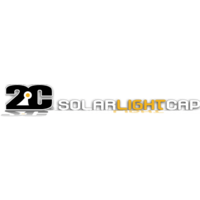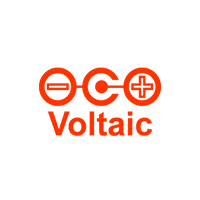How to calculate your solar power needs whilst travelling?
Author: Steve Hegarty
How to work out Watts, Amps and Volts
What size solar panel do I need ?
Do I need a charge controller?
Which size Solar Charger do I need?
How to work out Watts, Amps and Volts
It stands to reason that a larger Solar Panel will collect more energy in less time, but just how big does the solar panel need to be?
The power consumption of appliances is given in Watts. To calculate the energy you will use over time, just multiply the power consumption by the hours of use. For example:
10 watt device used over 3 hours equals 10 x 3 = 30 Watt hours (Wh)
Here are a couple of equations to help you work things out (bear in mind that there are 1000 milliamps (mAh) in an Amp (A):
How to convert Milliampere-hours to Watt-hours
The energy in watt-hours (Wh) is equal to the electric charge in milliampere-hour (mAh) times the voltage in volts (V) divided by 1000:
Watt-hours = Milliampere-hours × Volts / 1000
or
Wh = mAh × V / 1000
Example
If your device doesn’t have the Watts labelled on it, then it should at least have the input Volts i.e. 240V and the Amps AC it draws such as 240V – 1.5A. You can then use the equation Watts/ Volts x Amps so 240/v x 1500 mAh/1000 = 360 Watts.
If the device lists AMPs instead of mAh you don’t need to divide by 1000 at the end.
How to convert Watt-hours (Wh) to Milliampere-hours (mAh).
The electric charge in milliampere-hours (mAh) is equal to the energy in watt-hours (Wh) times 1000 divided by the voltage in volts (V):
Milliampere-hours = Watt-hours × 1000 / Volts (V)
or
mAh = Wh × 1000 / V
Example
Find the electric charge in milliamp-hour when the energy consumption is 3 watt-hour and the voltage is 5 volts.
The electric charge mAh is equal to 3 watt-hour times 1000, divided by 5 volts:
3Wh × 1000 / 5V = 600mAh
Solar panels are commonly used to charge a battery – not to charge a device directly. Many of our solar chargers have inbuilt batteries. There are a couple of reasons for having batteries. Firstly smaller solar panels might not generate enough wattage to directly power an appliance, but they can build up a higher wattage via a battery. Secondly a battery can regulate the power going in to the appliance at a constant rate. When solar panels are charging a battery it is usually at a varying rate which could harm an appliance if not regulated.
Battery capacity is measured in Amp Hours (e.g. 17Ah). You need to convert this to Watt Hours by multiplying the Ah figure by the battery voltage (e.g. 12V) – see calculations above.
AH refers to amp hours. This rating is usually found on deep cycle batteries. If a battery is rated at 100 amp hours it should deliver 5 amps of power for 20 hours or 20 amps of power for 5 hours.
When choosing a deep cycle battery, keep in mind the equipment you will be powering and the time in which they will be running. Theorectically a 100Ah battery can deliver 5 amps over a 20 hour period (and so on). Taking into account the average small campsite - with a small 45W fridge running for 6 hours, 3 hours of 15W lighting and 20W of other electronic equipment - the minimum consumption to be expected is 335W. Take this wattage and divide it by the voltage, 12V, gives 28Ah. With the aim of leaving 50% in the battery brings the requirement to 56 Ah per day.
Another scenario: I wish to run my laptop (battery 240v – 1.5A) when I go away on the long weekend and will be using it for 3hr per day and I will be gone for 4 days. I have no way of charging the laptop while away, what size battery will I need? (Batteries shouldn’t be taken down more than 50% of their capacity so double the Ah result you get)
Answer: 240v x 1.5amp = 360w x 3hr = 1080w x 4days = 4320w / 12v = 360ah @ 50% so battery bank would need to be 720ah
What size solar panel do I need ?
Solar Panels power generation is commonly given in Watts e.g. 25 Watts. To calculate the energy it can supply the battery with, multiply the Watts by the hours exposed to sunshine, then multiply the result by 0.85 which allows for natural system losses
For the 25W Solar panel in 4 hours of Full Sun, 25 x 4 x 0.85 = 85 Wh. This is the amount of energy the Solar Panel can supply to the battery.
What type of connections do you have USB, 12V or AC? Many of our customers are trekking and only have need to solar charge smaller devices such as mobile phones, iPads or laptops, these can often by charged via a USB port or a 12V connection. However if you have larger appliances that need 240 volts you will probably have to look in to an Inverter.
Inverters
The power inverter converts your storage battery power into the 240 volts AC that runs your appliances. Unless you only run 12 volt DC appliances you will need a power inverter to supply your AC. These are usually only used with the larger panels such as the Global Solar 62 watt Flexible Panel or the Enerdrive 100 watt Folding Panel set.
There are 2 types of Inverters
Pure sine wave and Modified sine wave.
The Pure Sine Wave matches the power to that of which you get from your Electricity Supplier, its clean and you can run any appliance's safely even sensitive equipment.
The Modified sine wave used to be considered a dirty power but some aren't as bad as they used to be, you can use this inverter type for things that don't have sensitive electronics for example fridges, cookers, pumps, You may have to be careful with some appliances such as laptops and TVs so check first.
Many of our solar chargers don’t need a charge controller or already have one built in, alternatively they work in conjuction with batteries such as the Voltaic V60 or the Tekkeon MP3450 which regulate the charger. However for some of the larger travel solar panels 30 watts and above a charge controller or variable charge battery is needed. A Charge Controller is necessary to protect the batteries from over charging and supply them with the proper amount of energy to promote long battery life. If the charge isn’t regulated it can have a damaging effect on the battery being charged.
Which size Solar Charger do I need?
Your product's power adapter output rating should give you an indication of your devices power requirements such as output 12v 1A for a battery charger or output 19v 3.5A for a laptop or output 5v 1A for a smartphone.
We have three broad categories for travelling with solar, there are lots of variables such as how many gadgets you need to charge, how often will you need to charge them and how much sun do you anticipate on your trip?
Small Solar Chargers for mobile phones and cameras, such as the Voltaic 4 Watt Fuse, the AMP and the Converter or the Goal Zero Guide 10 Adventure Pack. As a very broad guide mobile phones may have a battery size of approximately 1500 mAh so most of our smaller solar chargers starting at around $99 would be sufficient to give your average mobile phone at least one full charge and in may cases up to two or three. Generally these are 5V (USB).
Medium Solar Chargers for tablets and iPads - the newer iPads (versions 2 & 3) have larger batteries approx size 11,500 mAh, so they need chargers with bigger batteries such as the Powermonkey Extreme (3 watts, 9000 mAh battery) or the Voltaic Spark (8 watts, 9000 mAh battery). These are generally 5V too, however there is a 12V option for the Spark.
Larger Portable Solar Chargers for laptops - Laptops have a big jump in power requirements so having something like the Voltaic Array, 10W Fuse, Laptop charging kit or one of the Global Solar Flexible Panels with a Tekkeon Battery gives you multiple Voltage settings. You can't charge a laptop from a USB (5V). Most laptops need 14, 16, 19 or more volts to charge. Some may be powered at 12V depending on the model.






